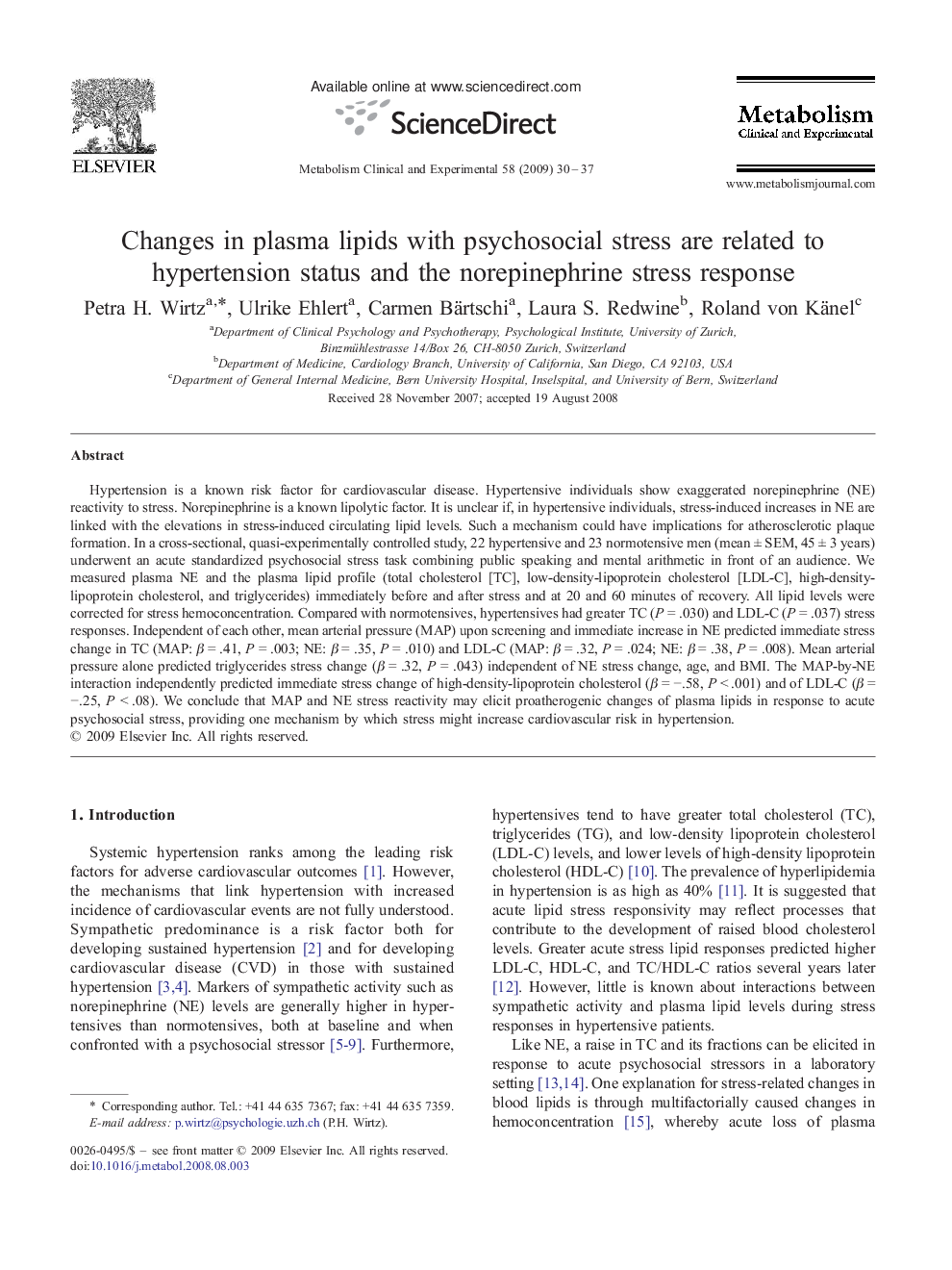| کد مقاله | کد نشریه | سال انتشار | مقاله انگلیسی | نسخه تمام متن |
|---|---|---|---|---|
| 2806154 | 1157103 | 2009 | 8 صفحه PDF | دانلود رایگان |

Hypertension is a known risk factor for cardiovascular disease. Hypertensive individuals show exaggerated norepinephrine (NE) reactivity to stress. Norepinephrine is a known lipolytic factor. It is unclear if, in hypertensive individuals, stress-induced increases in NE are linked with the elevations in stress-induced circulating lipid levels. Such a mechanism could have implications for atherosclerotic plaque formation. In a cross-sectional, quasi-experimentally controlled study, 22 hypertensive and 23 normotensive men (mean ± SEM, 45 ± 3 years) underwent an acute standardized psychosocial stress task combining public speaking and mental arithmetic in front of an audience. We measured plasma NE and the plasma lipid profile (total cholesterol [TC], low-density-lipoprotein cholesterol [LDL-C], high-density-lipoprotein cholesterol, and triglycerides) immediately before and after stress and at 20 and 60 minutes of recovery. All lipid levels were corrected for stress hemoconcentration. Compared with normotensives, hypertensives had greater TC (P = .030) and LDL-C (P = .037) stress responses. Independent of each other, mean arterial pressure (MAP) upon screening and immediate increase in NE predicted immediate stress change in TC (MAP: β = .41, P = .003; NE: β = .35, P = .010) and LDL-C (MAP: β = .32, P = .024; NE: β = .38, P = .008). Mean arterial pressure alone predicted triglycerides stress change (β = .32, P = .043) independent of NE stress change, age, and BMI. The MAP-by-NE interaction independently predicted immediate stress change of high-density-lipoprotein cholesterol (β = −.58, P < .001) and of LDL-C (β = −.25, P < .08). We conclude that MAP and NE stress reactivity may elicit proatherogenic changes of plasma lipids in response to acute psychosocial stress, providing one mechanism by which stress might increase cardiovascular risk in hypertension.
Journal: Metabolism - Volume 58, Issue 1, January 2009, Pages 30–37